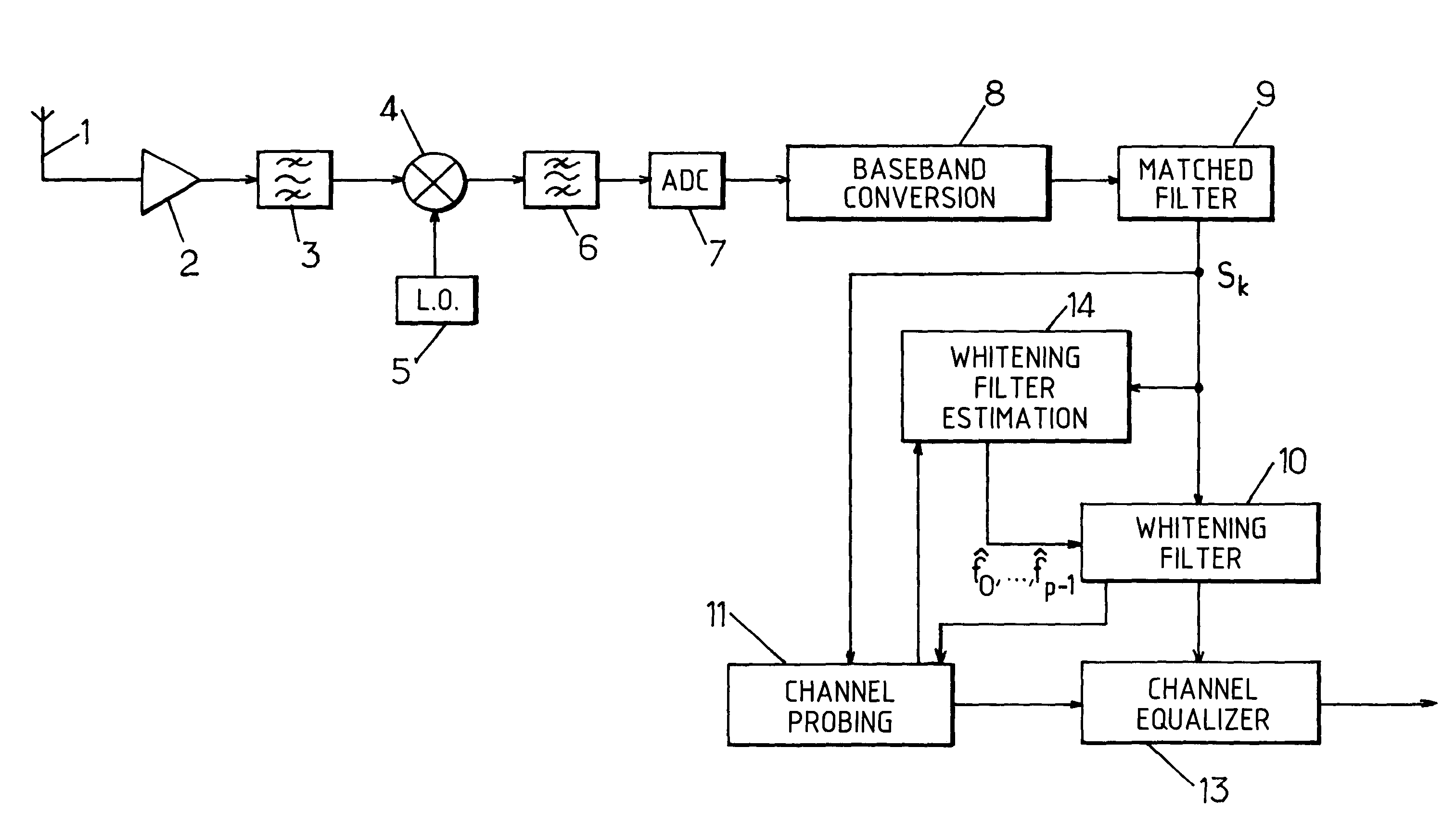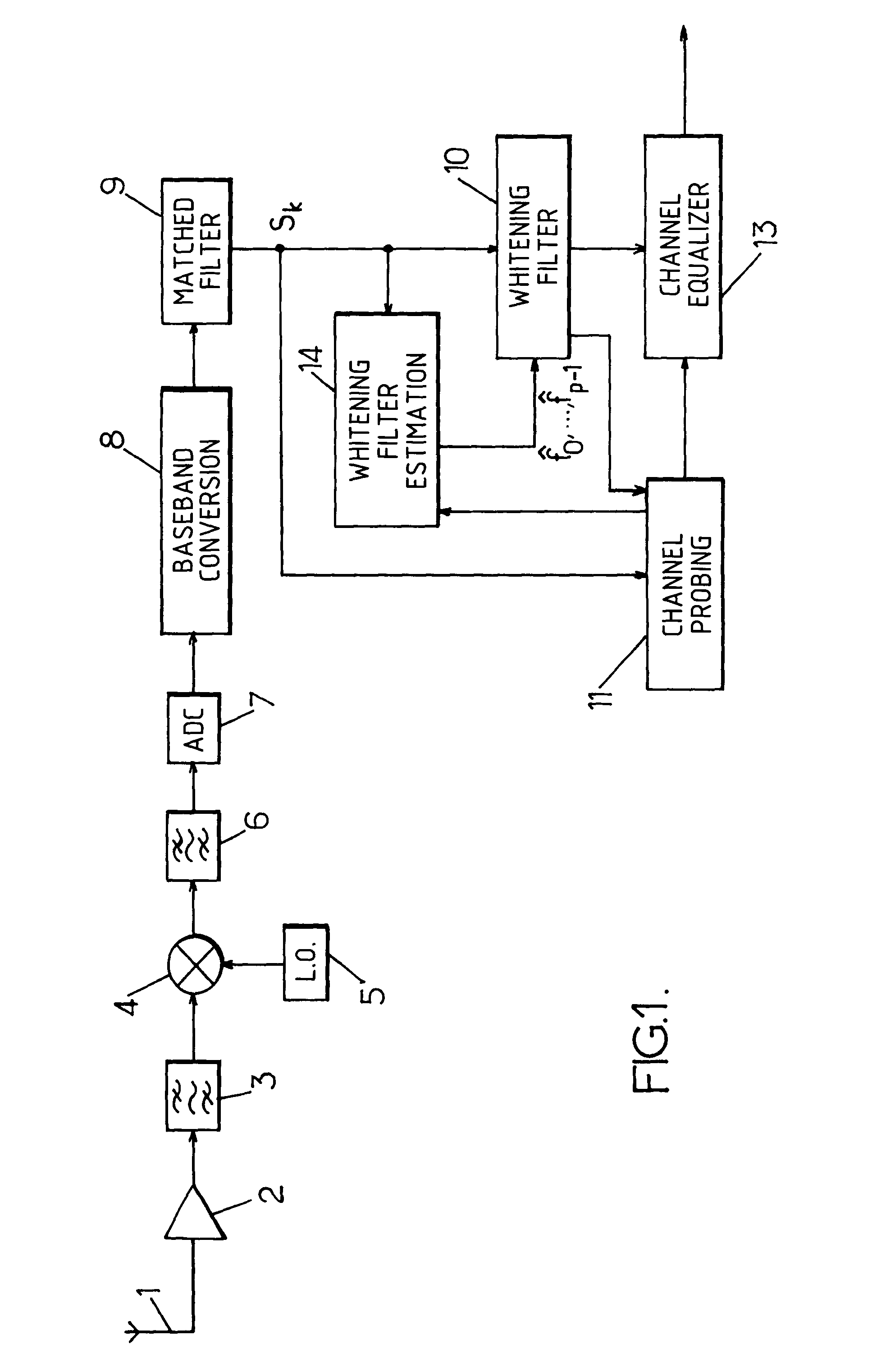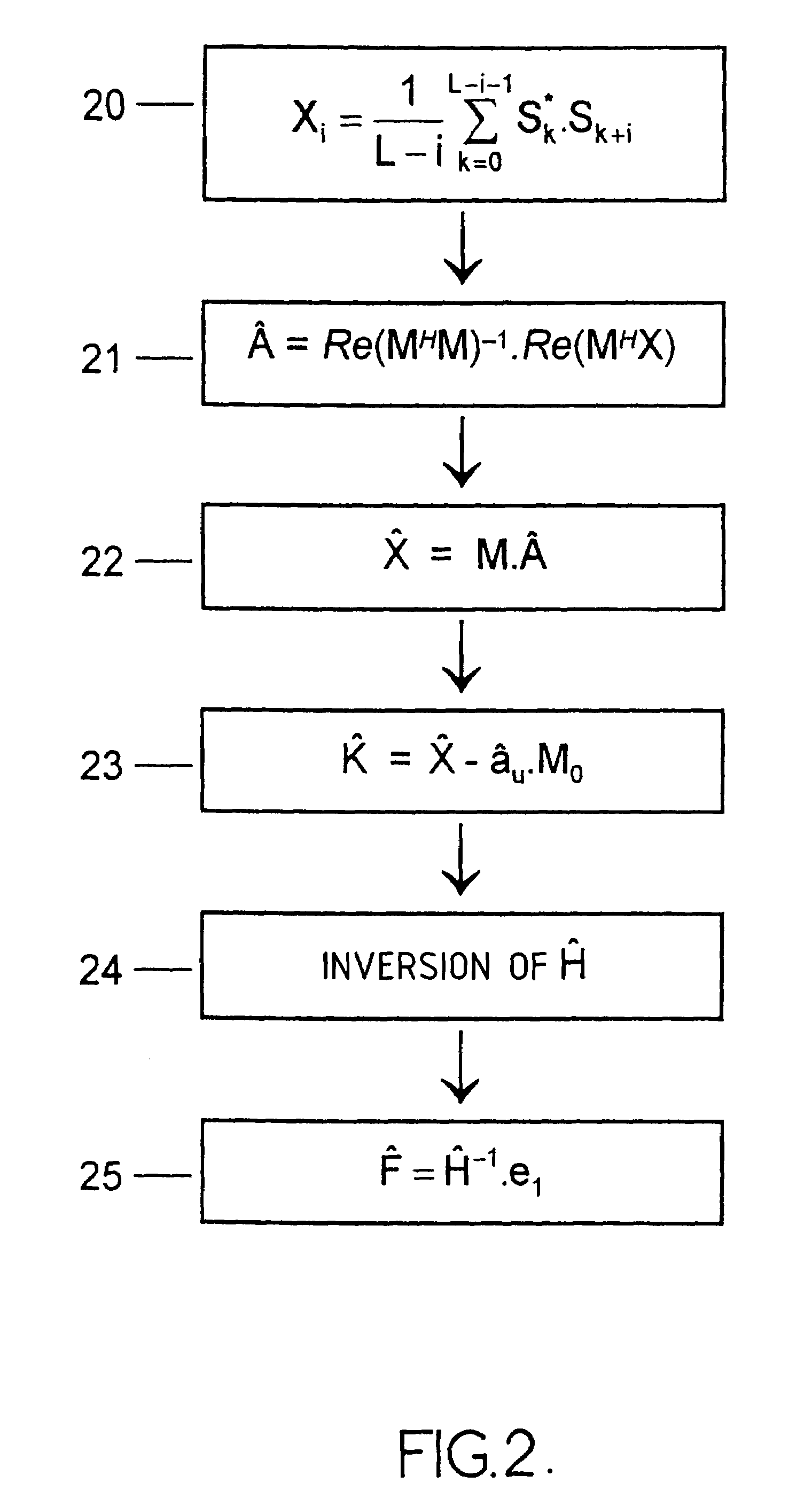Method for processing a digital input signal of a channel equalizer
a channel equalizer and digital input technology, applied in the field of radiocommunications, can solve problems such as sensitivity degradation, and achieve the effect of reliable estimation
- Summary
- Abstract
- Description
- Claims
- Application Information
AI Technical Summary
Benefits of technology
Problems solved by technology
Method used
Image
Examples
Embodiment Construction
[0036]The receiver represented in FIG. 1 comprises an antenna 1 for picking up radio signals. In the remainder of the present description, these radio signals will be regarded as of GSM type, without this being limiting.
[0037]GSM uses a plurality of carrier frequencies having spaced by 200 kHz. The spectral shaping of the signals is designed to minimize the interference between the adjacent frequency channels. However, an interference residual persists which adds to the noise picked up in the band of the useful signal. Moreover, a residual of co-channel interference due to other communications on the same carrier frequency in a distant cell also persists on account of the reuse of the frequencies in geographically separated cells. These disturbances get added to the broadband thermal noise.
[0038]The modulation used to send the GSM signal can be of GMSK type (“Gaussian Minimum Shift Keying”) for traditional GSM channels, or of EDGE type (“Enhanced Data for GSM Evolution”).
[0039]The r...
PUM
 Login to View More
Login to View More Abstract
Description
Claims
Application Information
 Login to View More
Login to View More - R&D
- Intellectual Property
- Life Sciences
- Materials
- Tech Scout
- Unparalleled Data Quality
- Higher Quality Content
- 60% Fewer Hallucinations
Browse by: Latest US Patents, China's latest patents, Technical Efficacy Thesaurus, Application Domain, Technology Topic, Popular Technical Reports.
© 2025 PatSnap. All rights reserved.Legal|Privacy policy|Modern Slavery Act Transparency Statement|Sitemap|About US| Contact US: help@patsnap.com



